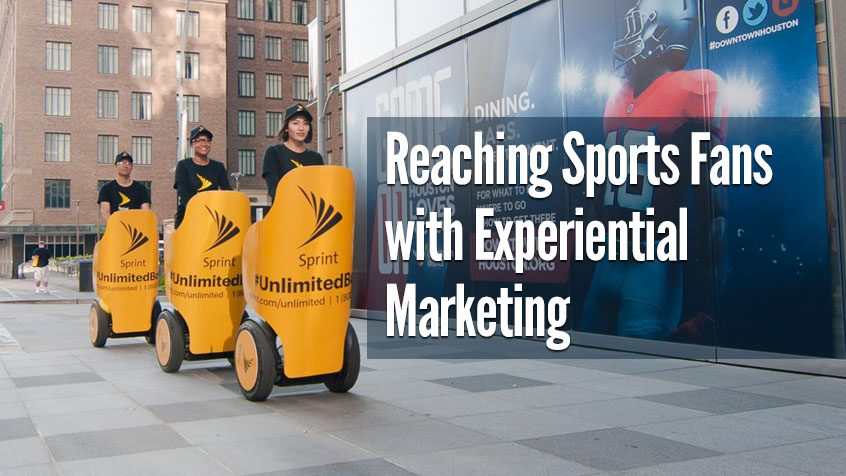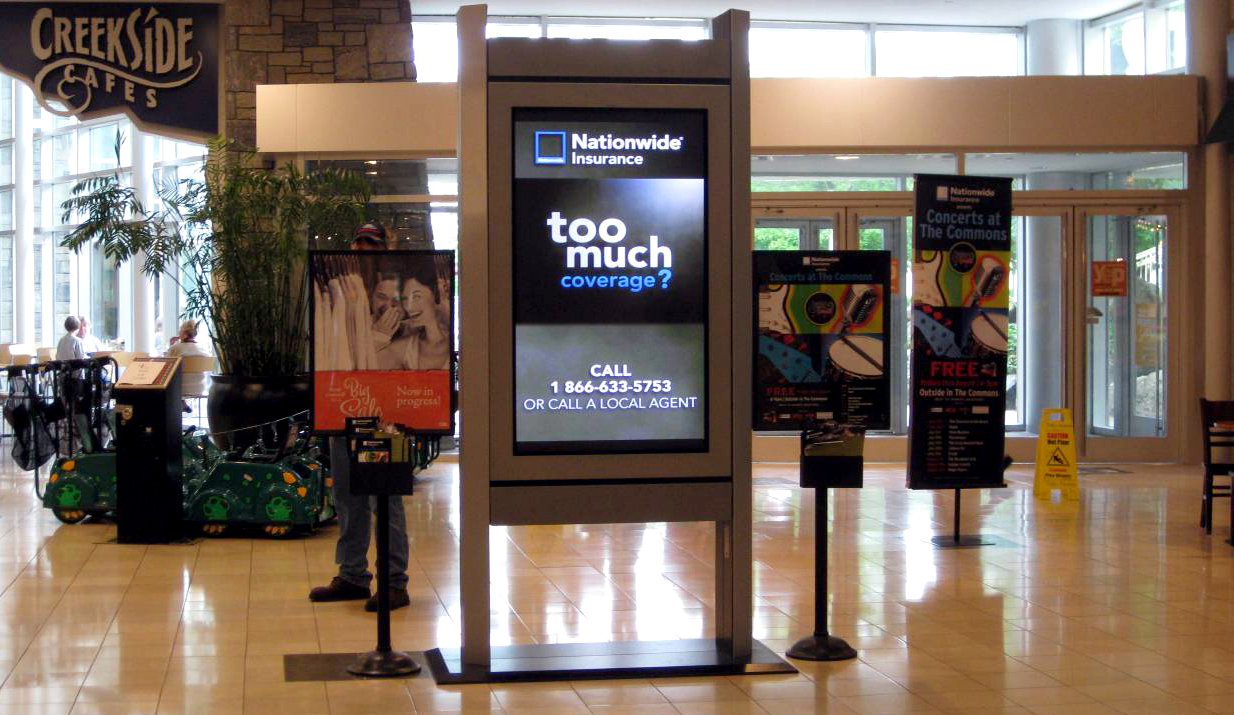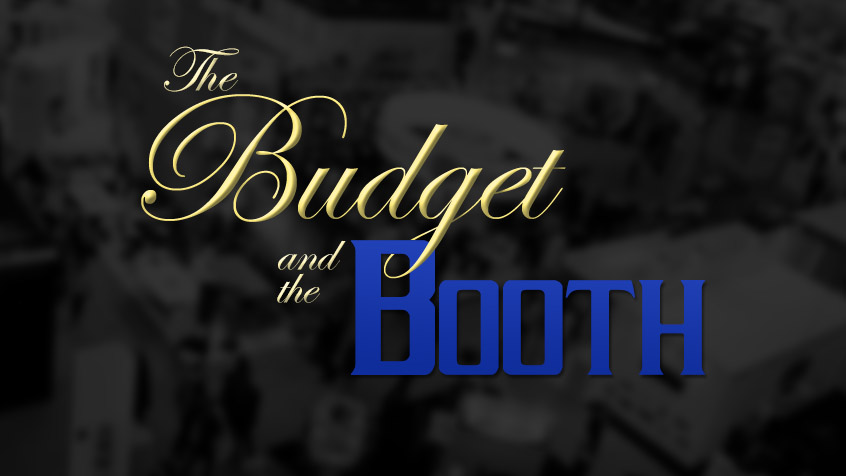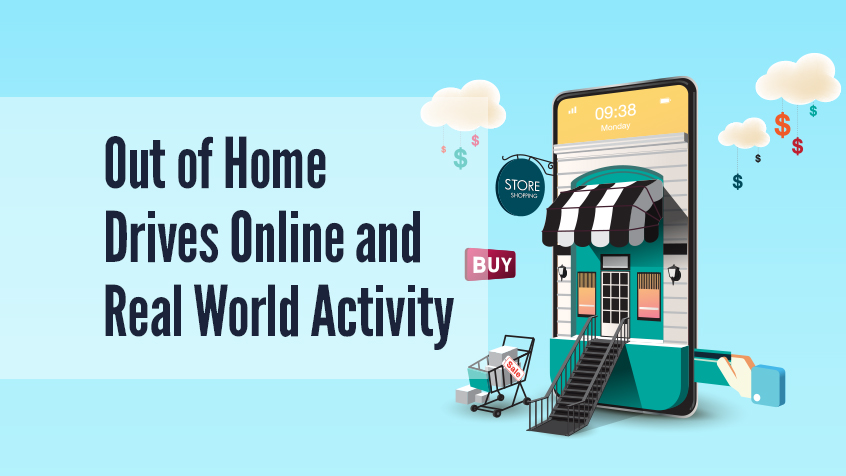Experiential marketing activations at major sporting events offer brands an important opportunity for reaching key audiences. Many people dream of attending the biggest sporting events around the globe: Super Bowl, World Cup Finals, Daytona 500, etc. A relative few are the lucky fans who get to witness these major spectacles in person, and that makes the events valuable targeting opportunities for brands.
The Super Bowl is, arguably, known more these days for the marketing that goes on around it than the game itself. While watch parties are major social events in the US, many viewers attend for the commercials rather than to see the outcome of the game. This affect can, and has, been felt in other major sporting events: MLB expansion games in London, UK, and the Field of Dreams game between the Yankees and White Sox. Events such as these draw major coverage from news outlets, social media, and the general public. Similar to the Monday after an episode of Game of Thrones, you would be an outsider if you had not witnessed these events in real time, even if remotely.
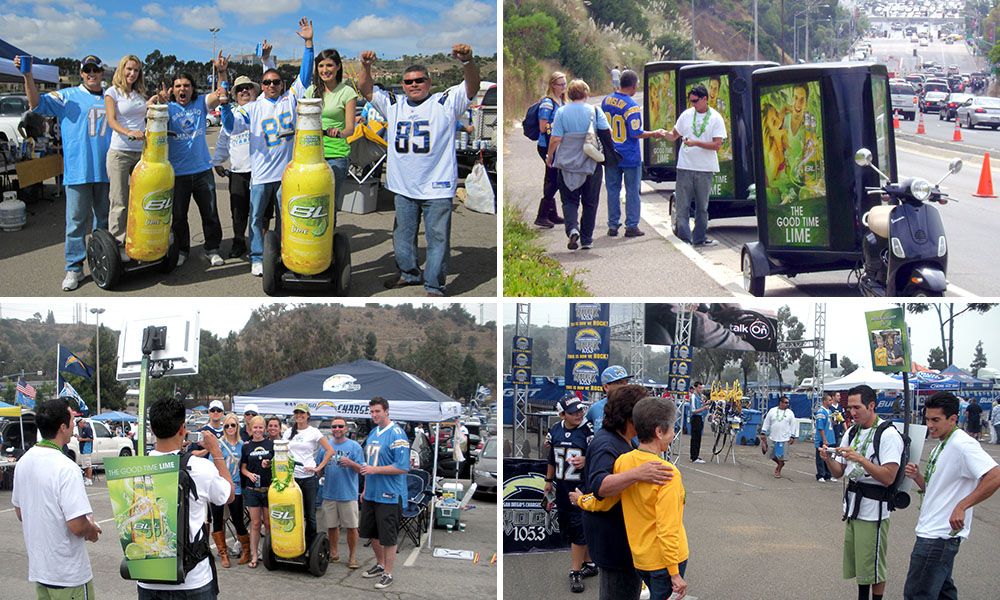
Bud Light Lime experiential activation at San Diego Chargers game.
Scouting Report: Who attends major sporting events?
TheShelf.com studied sports in American culture and found “between 2016 and 2017, Americans spent $56 billion on sporting events, including tickets, travel, food, drinks.” The average cost of a ticket to the Super Bowl hovers around $5,000. The average price to the World Cup Final is $1,100. A courtside ticket to a Golden State Warriors regular season game can run you north of $1,300.
Your average Joe is not the typical attendee of these events. Those attending are, statistically, college educated, have a higher income, and have the ability to travel relatively freely. SkyHook.com reported on the demographics of those who attended Super Bowl LII and found:
- 35% of attendees have an annual household income over $100,000
- 30% are ages 45-65
- 28% hold a bachelor’s degree
- 19% have a graduate degree or higher
- 80% travel from outside the host state
- Largest representation was from Minnesota, Massachusetts, Pennsylvania (Go Birds!) and California
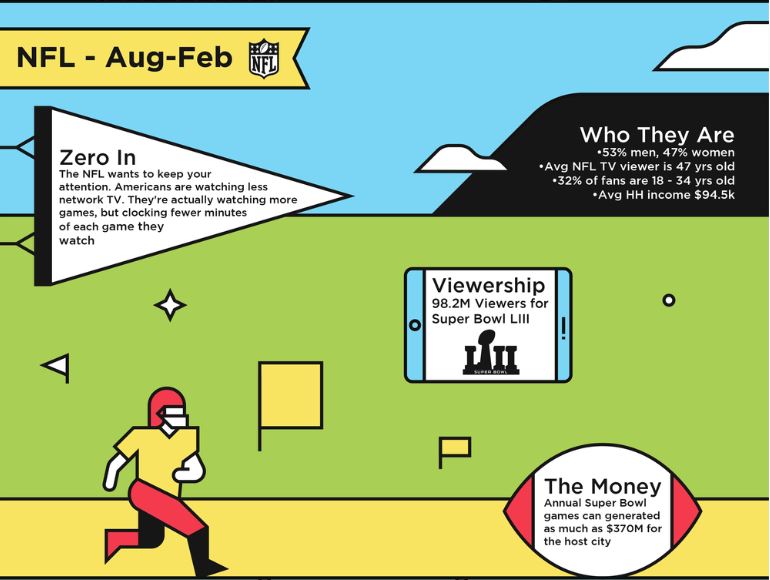
TheShelf.com’s Summertime Guide to Sports Fan Marketing.
Why is this information valuable to brands? It means there is a ton of money on the table. Americans are willing to shell out money at sporting events and it’s not limited to just the event itself. These events are once-in-a-lifetime opportunities for people who will want to experience the full scope of what a city has to offer. Similarly, folks will be open and willing to see what your brand has to offer.
Play-by-Play: What types of experiences are most effective?
Experiential marketing is an ideal vehicle for targeting audiences and influencing them, accordingly. These interactions are more impactful, personal and effective than other avenues of marketing. In some instances, depending on your brand, a billboard on the side of a highway or a branded motor vehicle can work wonders. Experiences offer a more tactful approach. By creating personal points of contact, you are able to put a face to a company, play off of genuine emotion, and create repeat revenue-generating customers.
Choosing an effective experiential is immensely helpful in achieving deeper engagement with your audience and creating a memorable impression. For a sporting event, here are a few ideas!
- Food Trucks & Restaurant Pop-ups: Stadium food is expensive and usually means waiting in line for a 4-hour old hot dog or questionable nacho cheese. An opportunity to have more satisfying food without making such a dent in one’s wallet is always a welcome option. Include a free giveaway or social integration and give the people what they want (shout out the O’Jays) while increasing brand reach.
- Branded Rideshare, Pedicabs & Free Transportation: Rideshare cars are good promotional platforms for brand awareness. Sometimes rideshare is limited in how close they can get to stadiums during game day. A branded pedicab can allow you to service those who might otherwise be walking. They also allow for more personal connection and can generate the FOMO or “Hey, I want to ride one of those!” effect.
- Gamification, Contests & Competitions: People who are attending sporting events are likely fairly competitive in nature, to some degree. Also, who doesn’t like a quick game against a friend to settle an old wager. Seriously, though, you can easily tie-in your brand to the event you are attending with some friendly competition. We utilized a football toss game at the Super Bowl to win prizes. The costs to fabricate the game were not that exorbitant, and there were lines of people waiting to toss a football through a hole.
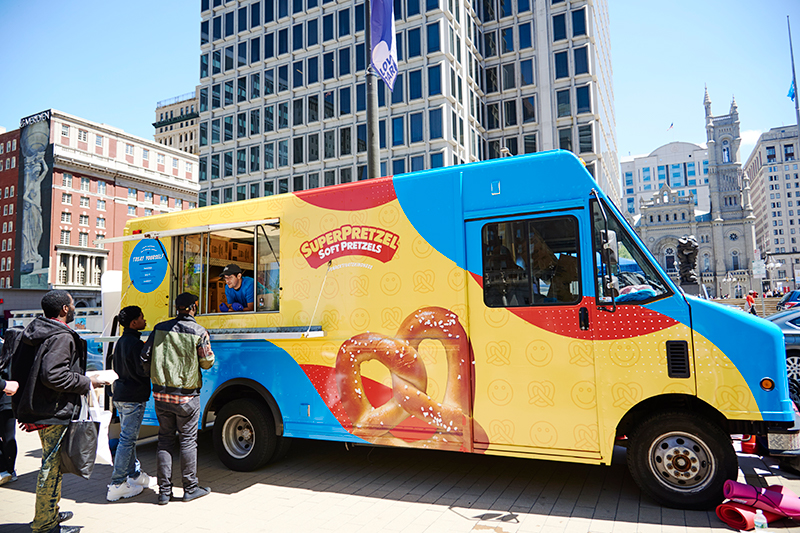
SUPERPRETZEL experiential sampling activation.
Game Changer: What are the new opportunities?
There is value to a brand becoming the black sheep of trends, though. Major brands have recently been going against the grain and begun paving their own way. Major League Baseball recently announced a Field of Dreams game in Iowa. Maybe this picture will look familiar:
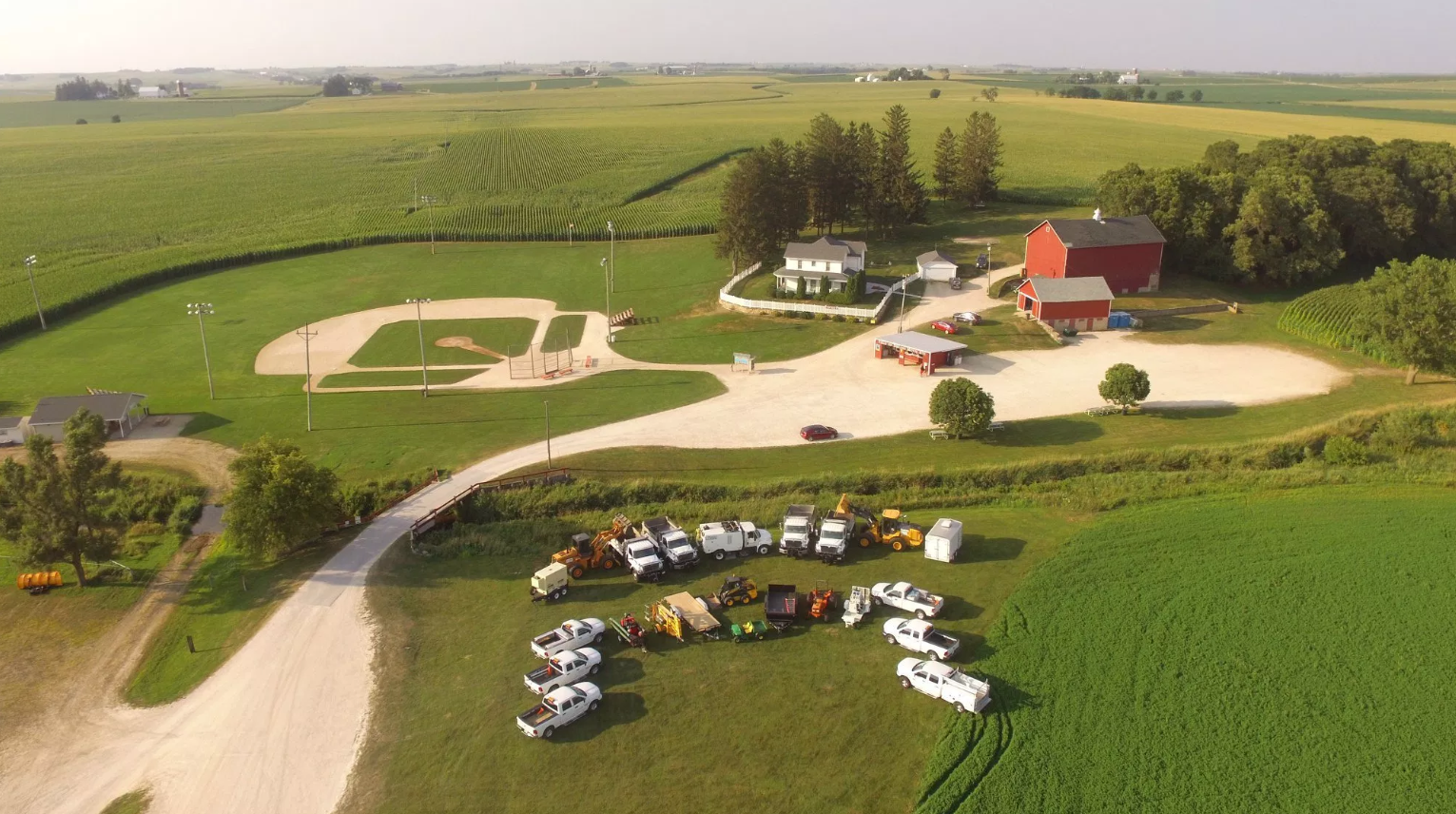
A scene from the movie Field of Dreams.
This is the location of where Major League Baseball will be creating an 8,000-person stadium. There are no Michelin star restaurants. There are no 4- and 5-star hotels to house 8,000 fans descending. The small town is home to little more than 4,000 residents. There is a Super 8 Motel and 5.5 square miles of what Google Maps shows me are quite a bit of farms.
An initial glance raises some obvious questions. Where will these people stay? Where will they eat? Most importantly, though, what will they do? When people travel they want things to do!
If we look at the Olympics, ticket sales have slowed over the last decade or so. The LA Times reported that prior to the 2018 Winter Olympic, in Pyeongchang, South Korea, organizers revealed that “nearly 40% of their 1 million tickets had yet to be purchased.” A similar outcome occurred in Sochi, Russia in 2014, and in Turin, Italy in 2006.
The blame can be directed towards the Olympics needing large swaths of land to erect stadiums, ski slopes, and the Olympic Village. Due to this, the location is often incredibly remote from major cities where folks want to travel.
So, what will people actually do in the middle of Dyersville, Iowa? Well, it just might be the perfect landscape to activate some experiential marketing!
The remote event location opens the door for better engagement opportunities with less competition for brands to connect with fans. Without big city amenities and distractions, experiential marketing can benefit from this void with massive share of voice by creating food, transportation, activities and entertainment.
Contact Us to learn more.

